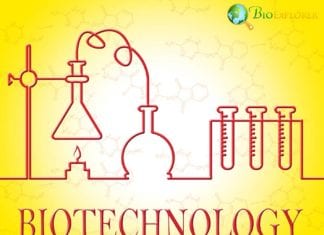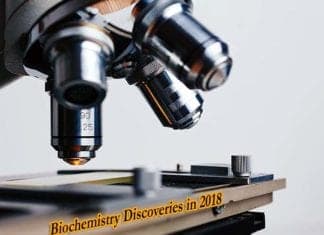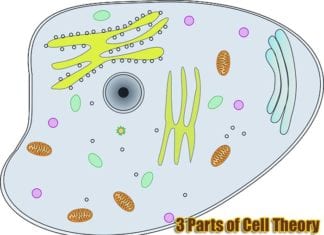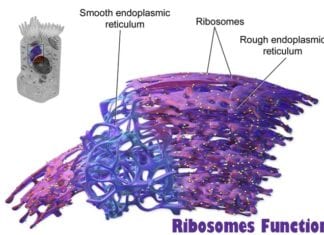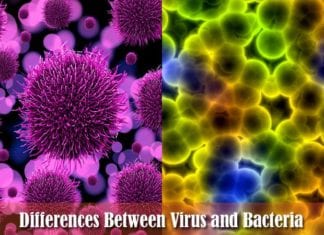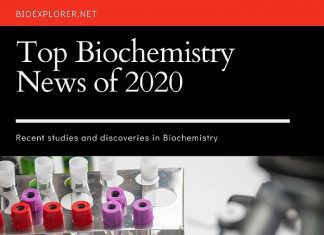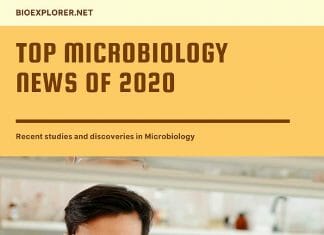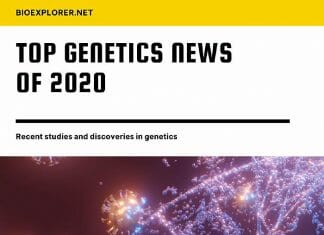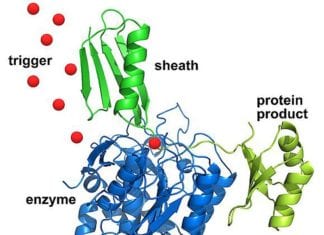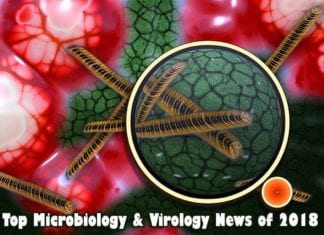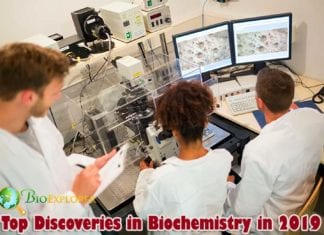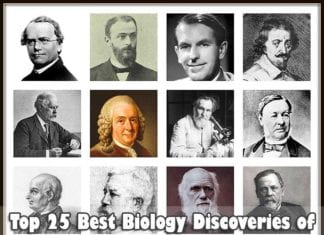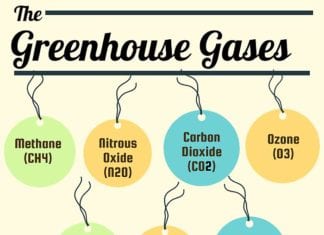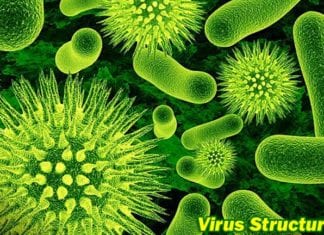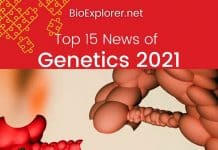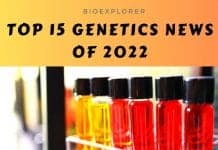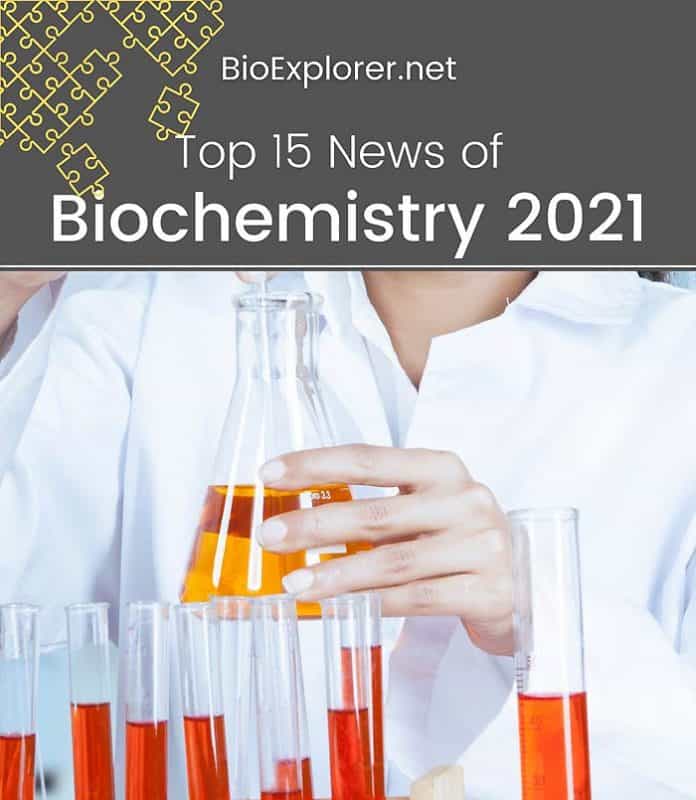
These topics highlight the inventions in biochemistry 2021. It emphasizes various biochemistry research and developments such as the relationship between enzyme and substrate concentration, the mechanism for RNA-protein interaction, strategies to overcome DNA replication errors, biochemicals leading to neurodegenerative disease, natural product biosynthesis, high-yield synthesis of antiviral drugs, hydrogel-based brain-machine interface, and more.
Table of Contents
- Top 15 Biochemistry News of 2021
- 1. Scientists suggested that the right blend of enzyme and substrate concentration can create enzyme-based biological cellular factories (Germany, Oct 2021)
- 2. Unraveling biochemical laws governing the expression of thousands of genes and interactions between RNA and proteins (USA, Feb 2021)
- 3. De-regulated biochemical pathways can lead to bipolar disorder (USA, April 2021)
- 4. Scientists confirm that the design of proteins with novel biochemical functions is now possible (Japan, June 2021)
- Explore What Is Cell Theory & Parts of Cell Theory
- 5. Highly effective human reverse transcriptase that can write RNA sequences into DNA has been discovered (USA, June 2021)
- 6. Metabolic engineering made it possible to combat pathogen attacks in a better way by developing tropone-based compounds (Germany, July 2021)
- 7. Scientists investigated the mechanism of how enzymes to aid Actinobacteria to create bioactive compounds (Germany, March 2021)
- Top 10 Biochemistry News of 2020 – A Round-Up
- 8. Antifungal drug’s atomic structure confirms novel mechanism, paving the way for less harmful derivatives (USA, Dec 2021)
- 9. Scientists discovered a new pathway for rapid, high-yield synthesis of the investigational COVID antiviral drug (USA, Nov 2021)
- 10. As predicted in 1953, mirror-image peptides form a “rippled sheet” structure (USA, Dec 2021)
- 11. Scientists reveal the enzyme responsible for the coronavirus’s resistance to antiviral drugs (USA, Aug 2021)
- Top 15 Latest Microbiology & Virology Discoveries in 2018
- 12. Researchers unveil flexible brain-machine interface made of hydrogel (Korea, July 2021)
- 13. Researchers found a crystalline, non-biological substance that exhibits induced-fit binding behavior (USA, 2021)
- 25 Mind-Blowing Biology Breakthroughs That Shaped Our World!
- 14. Researchers found a nitrogenase-mediated carbon monoxide (CO) reduction mechanism (Germany, June 2021)
- 15. Researchers find that protein switches control the replication of DNA (USA, July 2021)
Top 15 Biochemistry News of 2021
Let’s glimpse the research findings of 2021 in Biochemistry with broader perspectives.
1. Scientists suggested that the right blend of enzyme and substrate concentration can create enzyme-based biological cellular factories (Germany, Oct 2021)
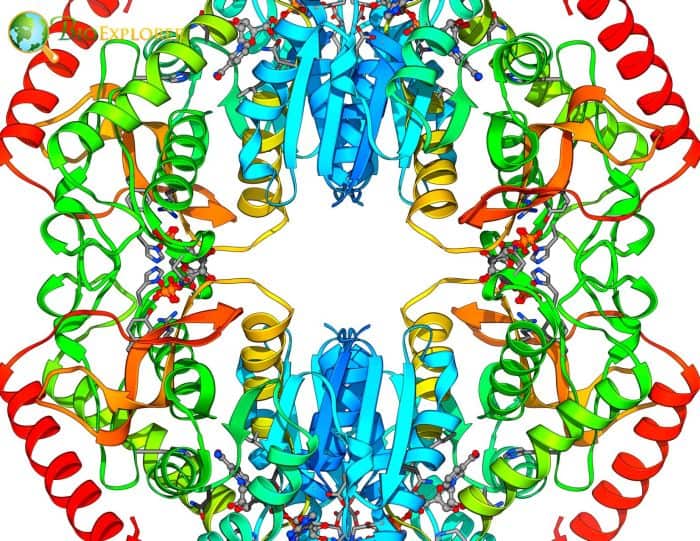
A large portion of the resources used by biological cells goes toward creating the enzymes that catalyze the transformation of substrates into products. An international team of bioinformaticians and biophysicists found the most effective relationship between an intracellular enzyme and substrate concentrations.
- Numerous chemical reactions that would otherwise occur too slowly or not at all are catalyzed by enzymes.
- Enzymes are crucial molecular tools for cells to produce their structural constituents and control their processes. There are countless varieties of enzymes and substrates in biological cells.
- Understanding how their concentrations affect cellular functions is crucial for molecular biology and medicine.
- Such information also aids biotechnologists in creating enzyme-based biological factories that are more effective.
The study’s findings support the idea that a substrate’s intracellular mass should equal the mass of the free enzymes awaiting its conversion into products. Experimental data for the bacterium E.coliproved this connection.
Suggested Reading:
Top 10 Biotechnology Discoveries in 2019
![]()
2. Unraveling biochemical laws governing the expression of thousands of genes and interactions between RNA and proteins (USA, Feb 2021)
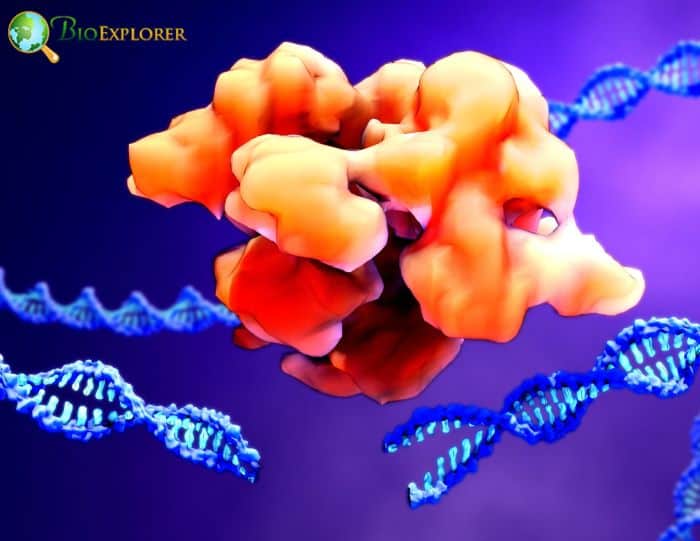
It may be easier to understand how gene function is affected by diseases like cancer, infections, and neurodegenerative disorders now that it is possible to measure specific traits of proteins that bind to RNA in cells.
- RNA, also known as ribonucleic acid, carries the genetic code within the body. RNA-binding proteins are crucial for controlling how genes are expressed.
- Scientists already knew that these proteins’ “binding kinetics ” or how frequently and for how long they bind to a specific site in an RNA, determine how well they work.
- The researchers used a laser emitting extremely brief (femtosecond) pulses of ultraviolet light to crosslink the RNA-binding protein known as DAZL to its thousands of RNA-binding sites to measure the kinetics of RNA-binding proteins.
- Deleted in Azoospermia-Like (or DAZL), plays a role in germ cell development. The change in the crosslinked RNA over time was then measured using high throughput sequencing, and the binding kinetics of DAZL at countless binding sites were ascertained.
To create strategies that specifically target RNA protein interactions for therapeutic purposes, researchers must be able to quantitatively predict how an RNA binding protein regulates the expression of thousands of genes. The study represents an important step toward understanding how gene function is regulated and how to develop strategies to correct errors in this regulation in diseases like cancer, infections, or neurodegenerative disorders.
Suggested Reading:
Top 15 Biochemistry Discoveries in 2018
![]()
3. De-regulated biochemical pathways can lead to bipolar disorder (USA, April 2021)
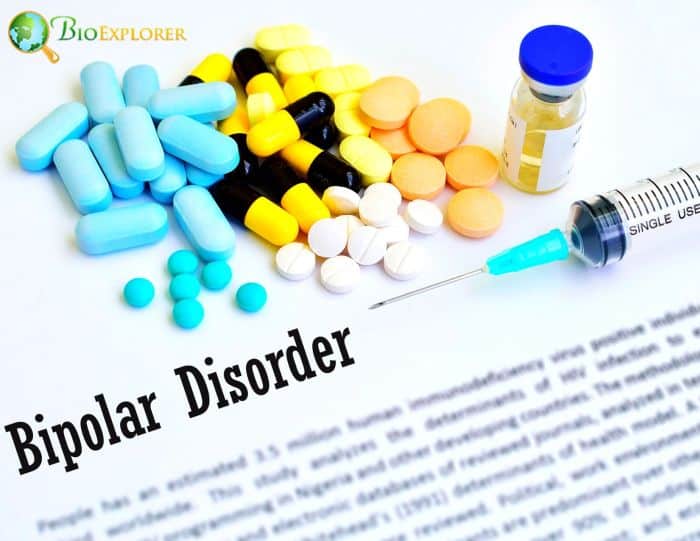
In recent studies, researchers have discovered for the first time that disruptions to a specific protein kinase called Akt can result in brain alterations connected to bipolar disorder.
- The findings contribute to our growing understanding of how the brain’s biochemistry influences health and disease and lay the foundation for future research into the treatment of the frequently ignored cognitive deficits associated with bipolar disorder, such as memory loss.
- Akt is a protein kinase, a class of proteins that tags other proteins with phosphate tags. These phosphate tags can switch on or off other proteins, altering their behavior and ultimately affecting crucial processes.
- These activities in neurons may include cell communication, which impacts cognition and mood. Phosphate tags are added to many other proteins when activated by the Akt pathway. These phosphate tags aren’t present when it’s quieter. The team found that this pathway-known as Akt-mTOR -has decreased activity in a part of the brain associated with attention and memory in men with bipolar disorder.
- Additionally, when the research disrupted the pathway in mice, the rodents experienced memory loss and the deterioration of vital brain connections, mimicking the changes seen in people with bipolar disorder.
- Bipolar disorder patients’ loss of Akt pathway function is likely a factor in their cognitive impairment.
Through these studies, the hope is that by pharmacologically targeting pathways like this one, we may be able to reduce the main symptoms of bipolar disorder.
Suggested Reading:
How To Become A Psychiatrist?
![]()
4. Scientists confirm that the design of proteins with novel biochemical functions is now possible (Japan, June 2021)
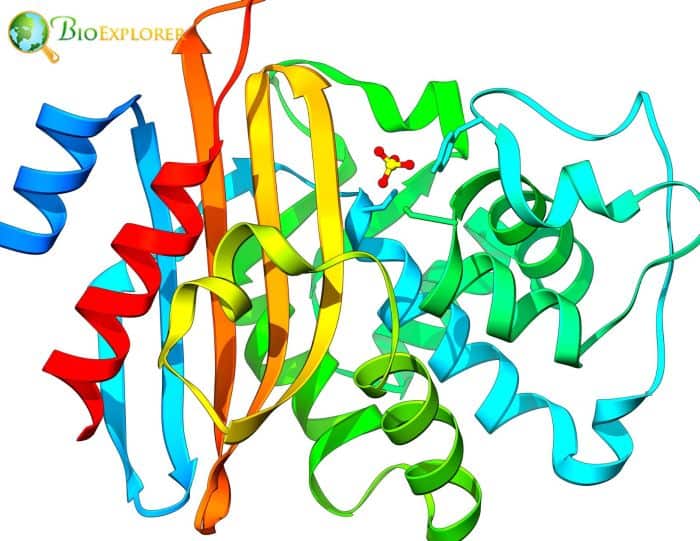
The design of proteins with novel biochemical functions is now possible thanks to the discovery of the design principles for building large, “ideal” proteins from nothing.
- The team had previously developed design principles to create miniature versions of what they refer to as “ideal proteins, ” which are structures without internal energetic frustration.
- Beta strands, a molecular feature commonly used in designing such proteins, play an important structural function for the molecules. The scientists have successfully created alpha-beta proteins with four beta strands in earlier designs.
- Proteins commonly found in nature, the ideal proteins created so far, are much more stable and soluble. These proteins will serve as good building blocks for creating novel, interesting biochemical functions.
- Scientists discovered that when they swapped the internal positions of the beta strands in their experimental structures with those in their computer models, the proteins folded differently.
- Despite their efforts, the team had trouble solving the strand-swapping puzzle by switching between computational design and laboratory experiments.
Creating proteins with more complex functional sites by including less-than-ideal elements, like longer loops, is crucial for function and to reduce backbone strain globally.
Suggested Reading:
Explore What Is Cell Theory & Parts of Cell Theory
![]()
5. Highly effective human reverse transcriptase that can write RNA sequences into DNA has been discovered (USA, June 2021)
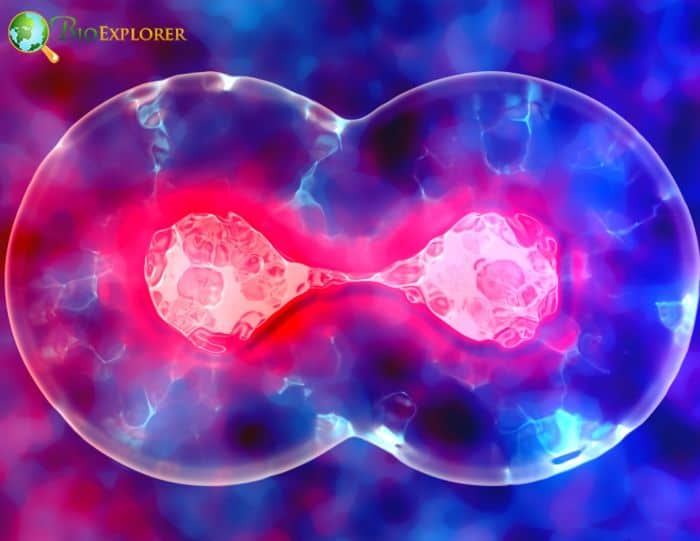
The ability to efficiently convert RNA sequences back into DNA is demonstrated by polymerase theta. This process is more typical of viruses than eukaryotic cells.
- DNA duplication machinery is found in cells, creating a new DNA set for a developing cell. RNA messages, which function like notes copied from the main DNA repository of recipes, are also constructed by the same class of machines, known as polymerases, to be read more effectively into proteins.
- However, it was once believed that polymerases could only copy DNA or RNA in one direction. This stops RNA messages from being rewritten into the genomic DNA.
- Thomas Jefferson University’s researchers have provided proof that RNA segments can be written back into DNA using a polymerase called theta, which has broad ramifications for many biological disciplines.
- Investigating polymerase theta, a unique polymerase. Only three of the 14 DNA polymerases in mammalian cells duplicate the entire genome to prepare for cell division.
- The 11 remaining proteins are responsible for spotting and fixing DNA strand breaks and errors. DNA is repaired by polymerase theta but frequently makes mistakes or mutations and is error-prone. Polymerase theta was more effective and introduced fewer errors, indicating that this function may be its main function in the cell.
The research shows polymerase theta’s main function is to act as a reverse transcriptase. This molecule may contribute to RNA-mediated DNA repair in healthy cells. However, polymerase theta is highly expressed in pathological cells, such as cancer cells. It encourages the growth and drug resistance of cancer cells.
It will be fascinating to learn more about the role of RNA polymerase theta in DNA repair and cancer cell growth. This work paves the way for numerous additional studies that will clarify the importance of polymerase. In addition, this finding raises the possibility that genomic DNA can be repaired or rewritten using RNA messages as templates.
Suggested Reading:
Ribosomes Function: The Cell’s Protein Machinery
![]()
6. Metabolic engineering made it possible to combat pathogen attacks in a better way by developing tropone-based compounds (Germany, July 2021)
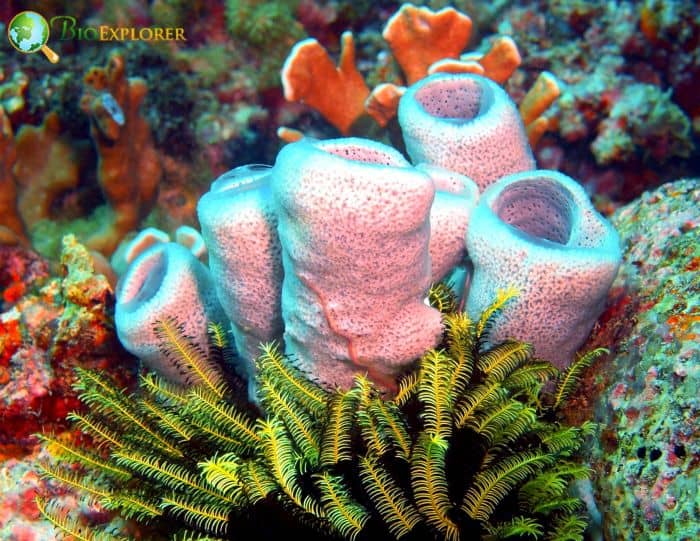
For the creation of ecologically and pharmaceutically significant tropone compounds, researchers have discovered an enzyme prototype.
- When bacteria interact symbiotically with plants, algae, or lower animals, such as corals and sponges, they produce tropone natural products, among other things.
- These substances protect corals and sponges from microbial pathogens. The Freiburg scientists have now investigated how the symbiotic bacteria create these bioactive substances.
- These bacterial tropones are produced by a brand-new type of enzyme. The researchers discovered that this enzyme incorporates oxygen into a chemical precursor compound and activates it in a previously undiscovered manner.
- The tropone’s fundamental structure is created during the process. By examining this enzyme’s functions in greater detail using chemical and biochemical techniques, the researchers clarified new intermediates in tropone biosynthesis.
These discoveries may provide a foundation for future pathogen control efforts or develop novel tropone compounds through biotechnological means.
Suggested Reading:
How Are Viruses Different From Bacteria?
![]()
7. Scientists investigated the mechanism of how enzymes to aid Actinobacteria to create bioactive compounds (Germany, March 2021)
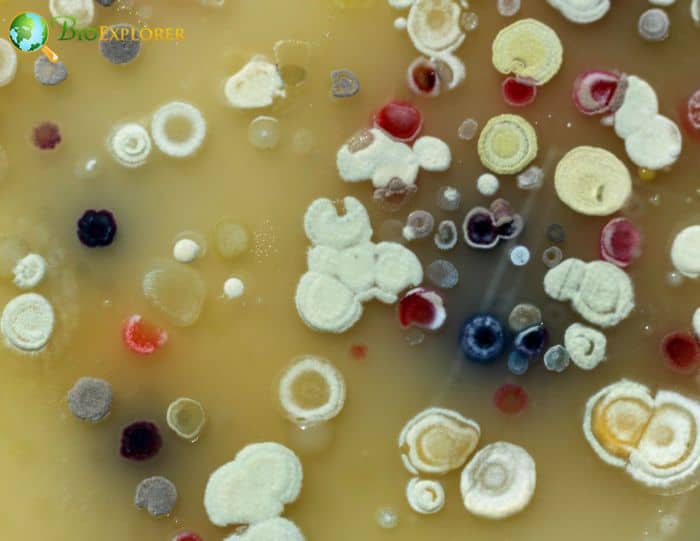
Researchers discover how complex bacterial metabolites are built using enzymes. Natural products produced by plants, fungi, and bacteria serve various purposes, including acting as barriers against competitors and predators. In addition, these substances are employed in medicine as antibiotics, cancer treatments, and cholesterol lower. To shed light on the crucial role of three enzymes in synthesizing a class of natural products, researchers from ETH Zürich in Switzerland.
- Numerous natural products, including aromatic polyketides, are produced by actinobacteria. The Freiburg scientists investigated how enzymes helped actinobacteria create bioactive compounds from basic, molecular building blocks.
- The biosynthesis of rubromycins, among the most structurally complex aromatic polyketides, was revealed by Teufel and his team to be primarily mediated by three enzymes.
- The enzymes significantly restructure a chemical precursor molecule, the researchers found. The rubromycins’ carbon backbone, essential to their range of pharmacological effects, is created through this process.
Important discoveries regarding how these enzymes regulate the synthesis of complex natural products in microorganisms. These discoveries might be crucial in bioengineering to create new bioactive puromycin-polyketides.
Suggested Reading:
Top 10 Biochemistry News of 2020 – A Round-Up
![]()
8. Antifungal drug’s atomic structure confirms novel mechanism, paving the way for less harmful derivatives (USA, Dec 2021)
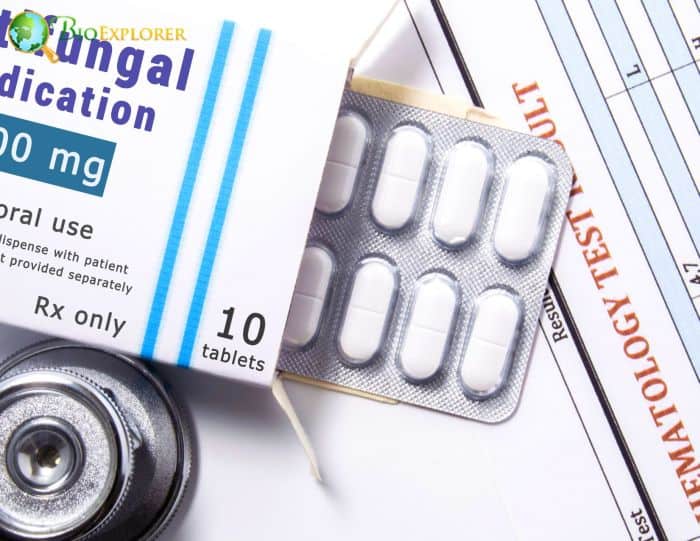
A drug frequently used to treat fungal infections has now had its structure mapped using cutting-edge molecular imaging technology. Still, its mechanism of action has long baffled scientists and medical professionals. Researchers have now described the structure of the potent but hazardous antifungal drug amphotericin B in atomic detail. Understanding the structure helps researchers in their quest to create AmB derivatives that are less toxic.
- Previously, scientists and medical professionals believed that AmB killed fungal cells by creating channels in the cell membrane, the cell’s outer covering.
- Burke and Rienstra’s team discovered in 2014 Rienstra, a professor at Illinois, referred that amphotericin kills cells primarily by robbing the membrane of sterol molecules-cholesterol in human cells and ergosterol in human fungal cells.
- Individual amphotericin molecules congregated to form a larger structure that acted like a sponge to absorb sterol molecules from cell membranes, killing the cells. The secondary effect of the antifungal activity is the ion channel.
- That enabled us to separate amphotericin’s fungicidal activity from its role in forming ion channels. However, since AmB aggregates into large masses, conventional molecular imaging methods like nuclear magnetic resonance are challenging.
- The new study’s authors created innovative sample preparation protocols and employed magic-angle spinning solid-state NMR, a cutting-edge molecular imaging method. The result was an atomistic rendering of how small AmB molecules arranged themselves into a large lattice in a head-to-tail configuration.
Thereby, the result shows the ergosterol and cholesterol-containing AmB complex structures after the examination. It provides a pathway for developing or discovering nontoxic derivatives of this effective medication that could help many people without the terrible side effects.
Suggested Reading:
Top 10 Microbiology News of 2020
![]()
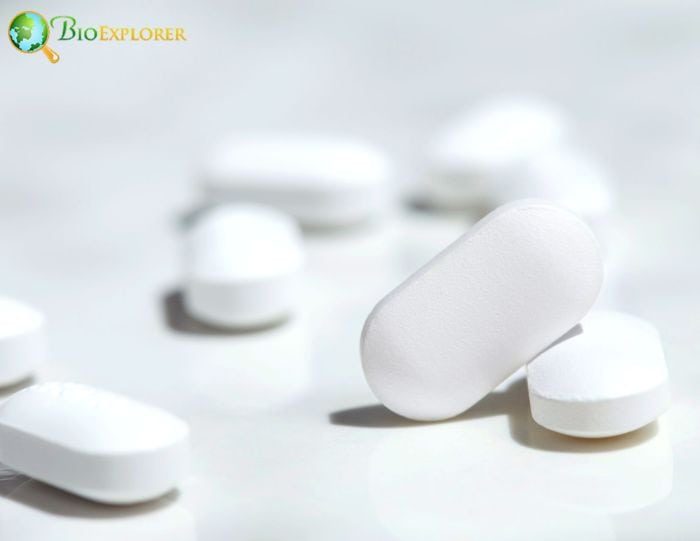
The American Food and Drug Administration has received a review request for the investigational oral antiviral molnupiravir, which is being developed for the treatment of COVID-19. According to recent reports, scientists have created specially designed enzymes to aid in the production of the pill, enabling a much faster and higher-yielding synthesis than is currently possible.
- When viruses copy their own RNA, molnupiravir causes errors that result in mutations that prevent replication.
- Recent interim phase 3 clinical trial results showed that molnupiravir was equally effective against various SARS and decreased the risk of hospitalization and death from COVID-19 for newly diagnosed, at-risk patients.
- The scientists created a three-step process for synthesizing molnupiravir from the sugar molecule ribose. First, they discovered enzymes or chemical processes to add the appropriate chemical groups to ribose in a particular order to create the molecule.
- The team discovered bacterial enzymes that only partially catalyzed the desired reactions for the second synthesis stage.
The new synthetic route was 70% shorter and had a seven-fold higher overall yield than the old route, which also employed a phosphate recycling technique.
Suggested Reading:
Top 10 Genetics News of 2020
![]()
10. As predicted in 1953, mirror-image peptides form a “rippled sheet” structure (USA, Dec 2021)
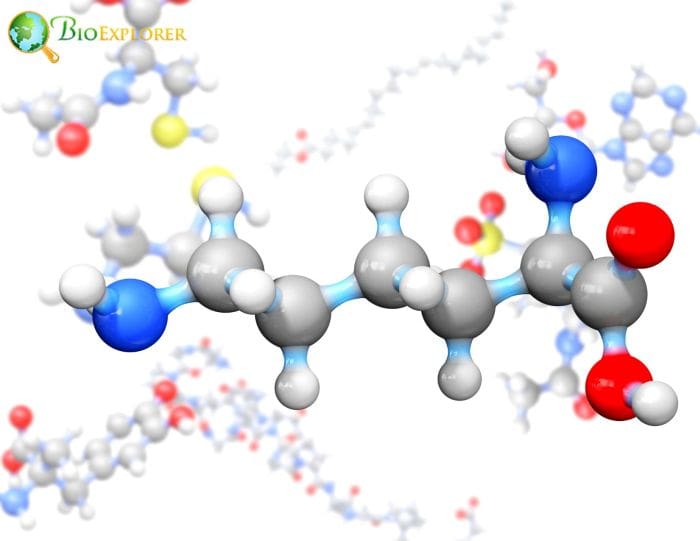
Scientists have created an unusual protein structure known as a “rippled beta sheet” and obtained images using x-ray crystallography by combining a small peptide with equal amounts of its mirror image. The pleated beta-sheet, a well-known structural motif in thousands of proteins, including significant disease-related proteins, is a variation on which the rippled sheet stands out. Two years after introducing the idea of the pleated beta-sheet, Linus Pauling and Robert Corey described the rippled beta-sheet.
- Long chains of amino acids folded into intricate three-dimensional shapes make up proteins, which all living things use to carry out a wide range of functions.
- The linear strands that make up a pleated beta sheet are bound together to create a structure resembling a two-dimensional sheet. Similar to a rippled beta-sheet, but with the alternate strands being mirror images of one another.
- The arrangement of the atoms in the amino acids that make up proteins can be “left-handed” (L) or “right-handed” (D), meaning they are identical in every way but mirror images, like left and right hands.
- While left-handed amino acids are required to create all naturally occurring proteins, either L or D amino acids can be used to create synthetic proteins.
Triphenyl alanine, a short peptide of three phenylalanine amino acids, was used in the new study by the researchers in mirror-image forms. The mirror-image peptides joined in pairs when combined in equal amounts. These pairs then arranged themselves into herringbone layer structures.
Suggested Reading:
Are Enzymes Proteins?
![]()
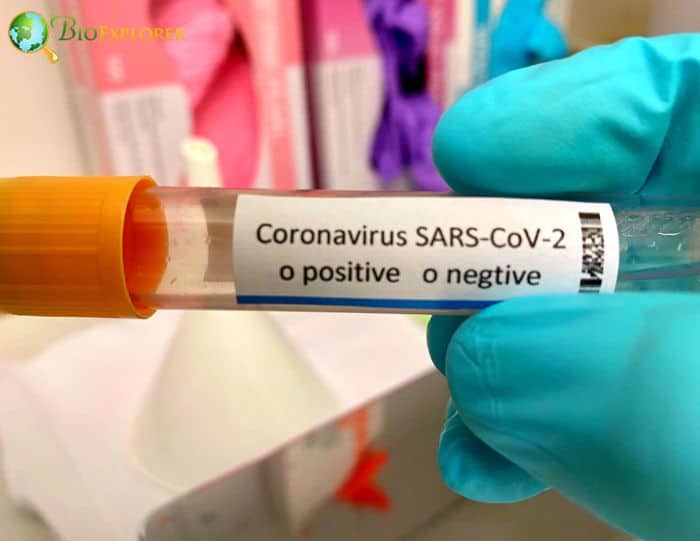
An important enzyme found in SARS-CoV-2, the coronavirus that causes COVID-19, is described in detail in a recent study. Many treatments become ineffective due to this enzyme’s removal of nucleoside antiviral medications from the virus’s RNA. Researchers could develop more effective treatments by using the information gleaned from the new study to find ways to inhibit the enzyme.
- A crucial enzyme found in SARS-CoV-2, the coronavirus that causes COVID-19, is described in detail in the study, recently published in the peer-reviewed journal Science.
- Most nucleosides analogs-based antiviral therapies are rendered ineffective by this enzyme, also known as the proofreading exoribonuclease (or ExoN), which removes nucleoside antiviral drugs from the virus’s RNA.
- The ExoN enzyme’s atomic structure is revealed in the new study, which may pave the way for the creation of novel strategies for its deactivation and improving therapies for COVID-19 patients. Being an RNA virus, SARS-genetic CoV-2’s material is made up of ribonucleic acid.
- The virus must create RNA to replicate. However, the virus’s genome is unusually large compared to other RNA viruses, which raises the possibility of mistakes occurring during RNA synthesis.
- Mismatched Nucleotides represent these errors, and too many errors can stop the virus from spreading. ExoN functions as a proofreader by identifying mismatches in the virus’s RNA and fixing mistakes made during RNA synthesis.
These findings can lead to a new alternative to inhibit this enzyme (ExoN); we may achieve better results in killing the virus with existing nucleoside antiviral treatments.
Suggested Reading:
Top 15 Latest Microbiology & Virology Discoveries in 2018
![]()
12. Researchers unveil flexible brain-machine interface made of hydrogel (Korea, July 2021)
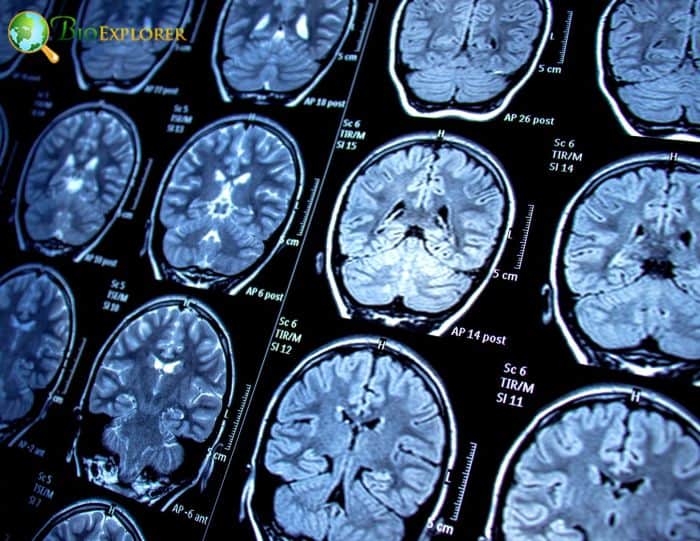
A research team from KAIST and their associates unveiled a recently created flexible hydrogel-based brain-machine interface. It is essential to create an interface that can stimulate the brain and recognize its signals in real-time to study the brain’s structure or diagnose and treat neurological diseases. However, existing neural interfaces differ mechanically and chemically from actual brain tissue. This shortens the lifespan of the interface by triggering a foreign body response and creating an insulating layer (glial scar) around it.
- The research group led by Professor Seongjun Park created a “brain-mimicking interface” to address this issue by incorporating a specially made multifunctional fiber bundle into the hydrogel body.
- The system includes an optical fiber that uses light to control particular nerve cells for optogenetic procedures, an electrode bundle for reading brain signals, and a microfluidic channel for drug delivery to the brain.
- When dry, the interface is simple to insert into the body because hydrogels solidify. But once inside the body, the hydrogel will quickly absorb bodily fluids and take on the characteristics of the tissues around it, reducing the likelihood of a foreign body reaction.
This study is significant because it was the first to use hydrogel as a multifunctional neural interface probe component, significantly extending the probe’s lifespan. With the finding, it is anticipated that advances in the study of neurological conditions like Alzheimer’s or Parkinson’s disease can call for prolonged observation.
Suggested Reading:
Top 15 Biochemistry Discoveries of 2019
![]()
13. Researchers found a crystalline, non-biological substance that exhibits induced-fit binding behavior (USA, 2021)
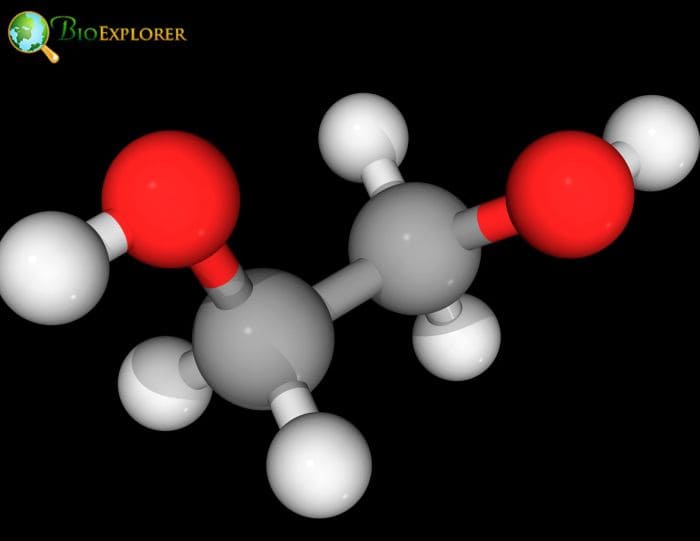
The analogy that the substrate fits into its enzyme like a key does not quite capture the situation. Substrate binding can also alter the lock (the enzyme’s structure) to create a perfect fit. For example, an international team of researchers has recently developed a non-biological, crystalline material that exhibits induced-fit binding behavior when it highly selectively absorbs acetylene into its pores.
- Increased selectivity of porous crystalline materials and improved handling of challenging separation processes, like gas separations, may benefit from an induced-fit effect mimicking nature.
- Materials with individual organic and/or inorganic linker molecules and metal ions as nodes are promising candidates.
- These could be hybrid ultramicroporous materials (HUMs), which are softer (less rigid) than traditional porous materials like zeolites or metal-organic frameworks (MOFs).
- Newly created soft HUM can alter its pores so that acetylene molecules fit perfectly inside them.
- Acetylene is bound to the substance sql-SIFSIX-bpe-Zn with unusual strength, enabling highly selective separation of acetylene from ethylene (C2H4) or carbon dioxide (CO2).
According to various analytical techniques and computer models,
The changes seen when acetylene is present are primarily caused by interactions between the acetylene and the inorganic anions. This differs from other recognized cases of an induced fit in the past. This adsorbent is anticipated to have a high separation efficiency and a low energy requirement for regeneration.
Suggested Reading:
25 Mind-Blowing Biology Breakthroughs That Shaped Our World!
![]()
14. Researchers found a nitrogenase-mediated carbon monoxide (CO) reduction mechanism (Germany, June 2021)
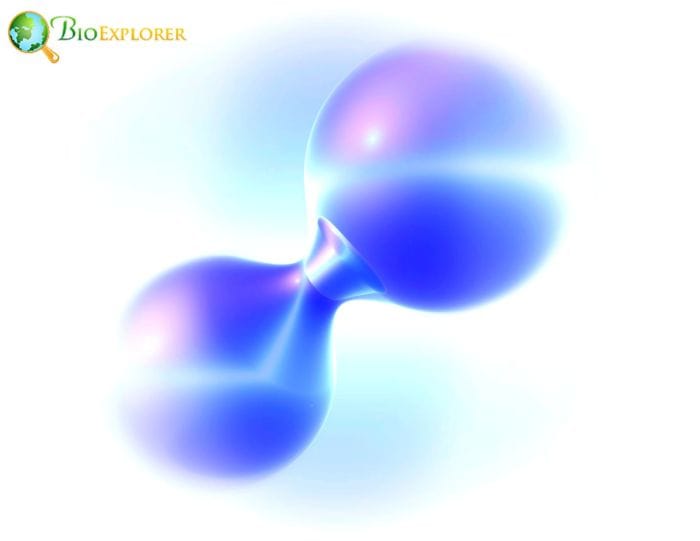
Organisms can access the nitrogen molecule (N2) in the Earth’s atmosphere, which is necessary for forming cellular structures, through the biological fixation of the element nitrogen by the enzyme nitrogenase.
- A nitrogenase variant that requires vanadium can convert the poisonous gas carbon monoxide (CO) into hydrocarbons.
- Because they are used to create fertilizers and synthetic fuels, these reductions of N2 and CO are among the most important industrial chemical processes. However, scientists have not yet been able to distinguish between the two reactions’ various pathways.
- High temperatures and pressure are necessary for the Fischer-Tropsch and Haber-Bosch industrial reductions of CO and N2, respectively.
- While the reduction of N2 results in the bioavailable product ammonium (NH4+), the conversion of CO results in the combination of at least two carbon atoms. Ethene (C2H4), a colorless gas with a significant role in producing fuels and plastics, is the reaction’s main product.
- Although the formation of a C-C bond during CO reduction and the cleavage of an N-N bond during nitrogen fixation are chemically quite fundamentally different, scientists previously hypothesized that nitrogenase uses the same fundamental mechanical principles during both reactions.
- This method produced a form of nitrogenase with two CO molecules at the active site, most likely representing a blocked state.
The research now describes in detail the mechanism of nitrogenase action that reduces carbon monoxide.
Suggested Reading:
Explore Types of Greenhouse Gases As Agents Of Climate Change
![]()
15. Researchers find that protein switches control the replication of DNA (USA, July 2021)
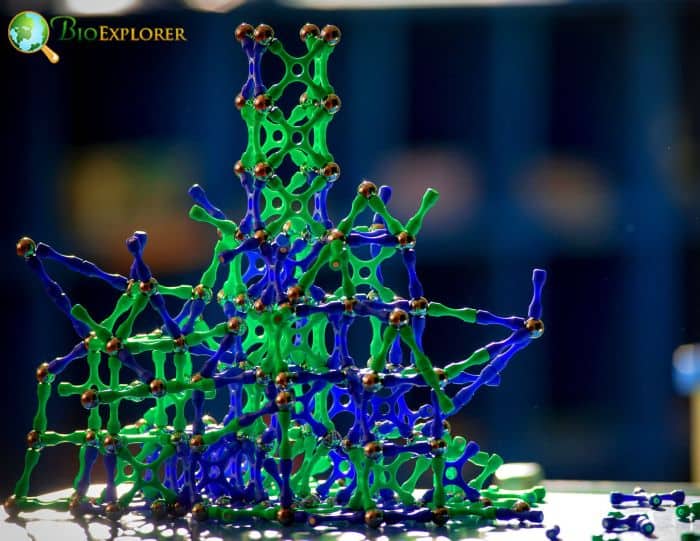
RADX was initially discovered by Cortez and his colleagues, who hold the Richard N. Armstrong, Ph.D. Chair for Innovation in Biochemistry several years ago. They connected it to a procedure cells use during DNA replication to respond to sites of damage.
- RADX regulates a procedure known as “fork reversal” at replication forks, which are sites of DNA synthesis. Cortez’s team discovered this previously.
- When the DNA replication machinery runs into a snag and slows down, fork reversal occurs, just like a train might if something was in the way. Fork reversal is one mechanism by which the cell responds to DNA lesions or any issue during replication, which occurs during every cell division cycle.
- Now, the researchers have found that, depending on the “track” circumstances, RADX has various effects on replication forks. For example, RADX inhibits fork reversal in unstressed cells (no lesions or problems) and promotes it in stressed cells.
- By attaching to another protein called RAD51, which is necessary at precisely controlled levels to cause fork reversal, the researchers learned the mechanistic details of how RADX functions.
The findings support the team’s earlier discovery that RADX affects cells’ receptivity to cancer chemotherapies. The protein BRCA2 (encoded by a gene linked to an increased risk of breast and ovarian cancer) and RADX compete to bind to the same site on RAD51.
Suggested Reading:
Explore Virus Structure, Viral Structure Types, and Functions
![]()
This series of biochemistry news gives us a detailed overview of the recent development in this field. The interplay between enzyme-substrate concentration, unraveling roles between RNA and binding protein kinetics, novel enzymes ExoN playing an important role as antiviral therapy, and establishment of induced fit model. Hydrogel-based brain interface synthesized and many more. With these developments as the foundation, we expected more exciting findings in 2022.
![]()


